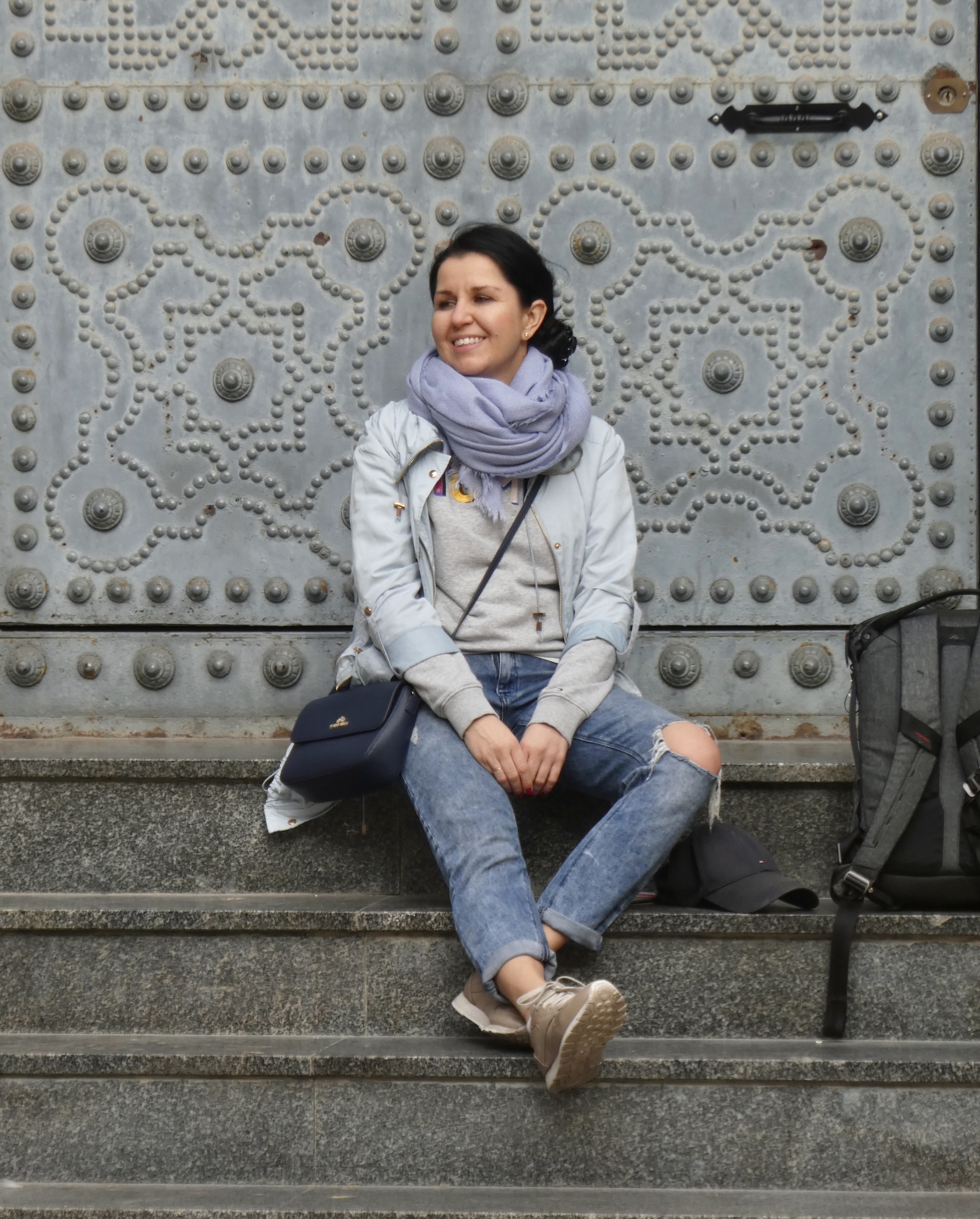December 13, 2019
In Valencia, day 3: the city
Our walk through Valencia, Part 2. We’ll, really this was the first part of the walk, and the Turia Gardens stroll came after. I just felt like posting things in this order for no good reason.
We began by walking through the blocks surrounding city hall, gazing at buildings. Much of this part of the city is quite modern, with many Valencian Art Deco buildings. It’s hard to make progress, if you’re trying to get anywhere. You see a colorful building down the street you’d like to get a better look at, and once there you round a corner and see another one.

| Heart | 2 | Comment | 0 | Link |

| Heart | 2 | Comment | 0 | Link |

| Heart | 1 | Comment | 0 | Link |

| Heart | 1 | Comment | 0 | Link |
After tearing ourselves away from that neighborhood we headed back to the public market. We made a brief stop here two days back, arriving just before the closing hour when nearly all the booths were already shuttered, but it was obviously worth returning to at the right time. It’s fantastic. A huge, beautiful Valencian Art Deco structure with an endless array of booths and stalls selling everything imaginable.
In case you’ve forgotten from two days ago, I’ll remind you that this is a huge modern building (started in 1915, completed 14 years later), covering 8,000 square meters and with room for 1,200 stalls. It is primarily an enormous food market, but there are also a few souvenir stands and restaurants. A fascinating place to wander through.
Adjacent to the modernist city market is the Silk Exchange, built in the late fourteen hundreds during what is recognized as Valencia’s Golden Age. A UNESCO world heritage site, the Silk exchange is recognized as one of the most important non-religious gothic structures in Europe.
For centuries, silk production was the primary industry in Valencia, and the city is now recognized as the western capitol of the Silk Road. Orchards surrounding the city were filled with mulberry trees; 5,000 workshops manufactured silk in the Velluters Neighborhood; and half of the city’s working population was engaged in the silk industry.

| Heart | 1 | Comment | 0 | Link |

| Heart | 2 | Comment | 0 | Link |

| Heart | 4 | Comment | 0 | Link |

| Heart | 3 | Comment | 0 | Link |
So those were the main sights for the morning. We also climbed to the top of Serrano Towers for a good view across the city, and then stopped in at a restaurant for lunch for our main meal of the day. Afterwards we walked together as far as the Royal Bridge so that Rachael could show me its huge gargoyles that she had seen on her first walk. After that we split up, and I continued on to the City of Arts and Sciences (which she toured earlier).
Valencia is an amazing city. Even with a five night stay, it feels like we’re just scratching the surface here. And, it still feels to me like the most bike-friendly large city I’ve ever visited.
A few other miscellaneous photos from the day:

| Heart | 2 | Comment | 0 | Link |

| Heart | 0 | Comment | 0 | Link |

| Heart | 1 | Comment | 0 | Link |

| Heart | 4 | Comment | 0 | Link |

| Heart | 1 | Comment | 1 | Link |
From Wikipedia:
"the bat represents a commemoration of the role of this city in the conquest of Valencia. The bat now rests just below the crown in Teruel's seal. While the use of the bat as a heraldic symbol is prevalent in the territories of the former Crown of Aragon it is rarely used elsewhere."
5 years ago

| Heart | 2 | Comment | 0 | Link |

| Heart | 3 | Comment | 3 | Link |
I would love to see her dance in that dress. The dress looks too heavy and stiff for Flamenco, but maybe a graceful ballroom dance?
5 years ago
And no, I doubt she could dance in that. She could hardly even sit down when she was posing for a shot on the stairs.
5 years ago
Not sure I'd want to spend that much on a dress that looks so uncomfortable.
5 years ago
| Rate this entry's writing | Heart | 5 |
| Comment on this entry | Comment | 0 |

























